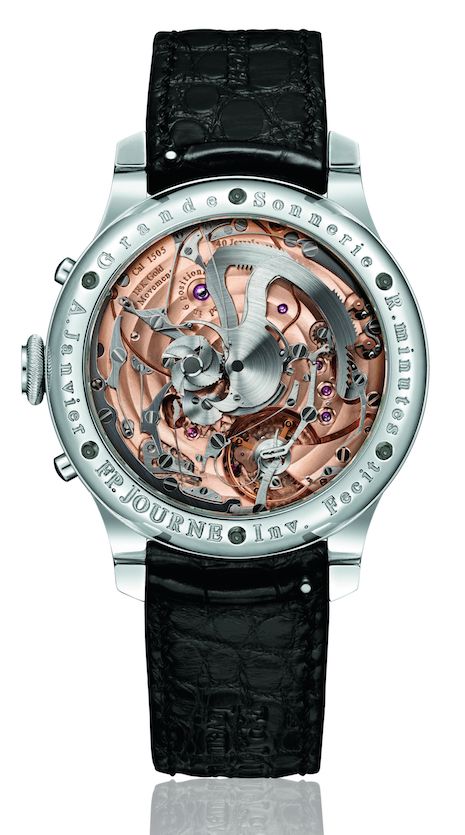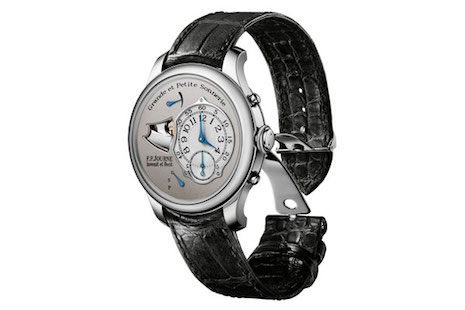 F.P. Journe's Sonnerie Souveraine in its case. Image credit: F.P. Journe
F.P. Journe's Sonnerie Souveraine in its case. Image credit: F.P. Journe
Swiss watchmaker F.P. Journe is bidding farewell to the Sonnerie Souveraine timepiece in anticipation of a new grand complication debuting in 2019.
To make way for the upcoming grand complication’s market entry, F.P. Journe will cease production of the Sonnerie Souveraine. From Dec. 31, 2018, F.P. Journe’s Sonnerie Souveraine will no longer be featured in the watchmaker’s catalogs, but all orders placed between now and then will be honored.
A collector’s timepiece
F.P. Journe is encouraging its enthusiasts and watch collectors to place an order for a Sonnerie Souveraine during 2018 to ensure that they are among the horologists to acquire an already rare and unique timepiece before it is too late.
The Sonnerie Souveraine is a notable timepiece due to its minute repeater being the most complex horological achievement, says F.P. Journe. The watch strikes 35,040 times per year without fail, making it the only striking timepiece to offer such safety of use.
F.P. Journe's Sonnerie Souveraine caseback. Image credit: F.P. Journe
While many watchmakers rely on numbered timepieces, F.P. Journe takes a more personal approach by engraving the owner’s name on the caseback. Doing so gives the watch the owner’s name, an identity and personality as well as “a raison d’être.”
By the numbers, F.P. Journe’s Sonnerie Souveraine took six years to develop and holds 10 registered patents. Each Sonnerie Souveraine takes three months to assemble and has 408 component movements and 582 parts in total.
Each day, the Sonnerie Souveraine’s hammer strikes to to mark 48 hours and the watch chimes 35,040 times per year.
F.P. Journe’s Sonnerie Souveraine is 42 mm in diameter and 12.25 mm thick. Image credit: F.P. Journe
Every so often a brand makes the decision to end production of a particular item. When this is done, it is common to see an uptick in interest from dedicated brand enthusiasts.
While it is generally understood that a vehicle depreciates in value after it is driven off the lot, British automaker Land Rover saw the opposite from its discontinued Defender model.
In 2016, shortly after it was announced that Defenders would no longer be produced, Land Rover saw a 30 percent increase in interest for the model from business professionals and celebrities around the world.
Consumers who purchased Defenders prior to Land Rover’s decision to discontinue the model proved they have made smart investments as prices for the vehicle continue to soar (see story).


